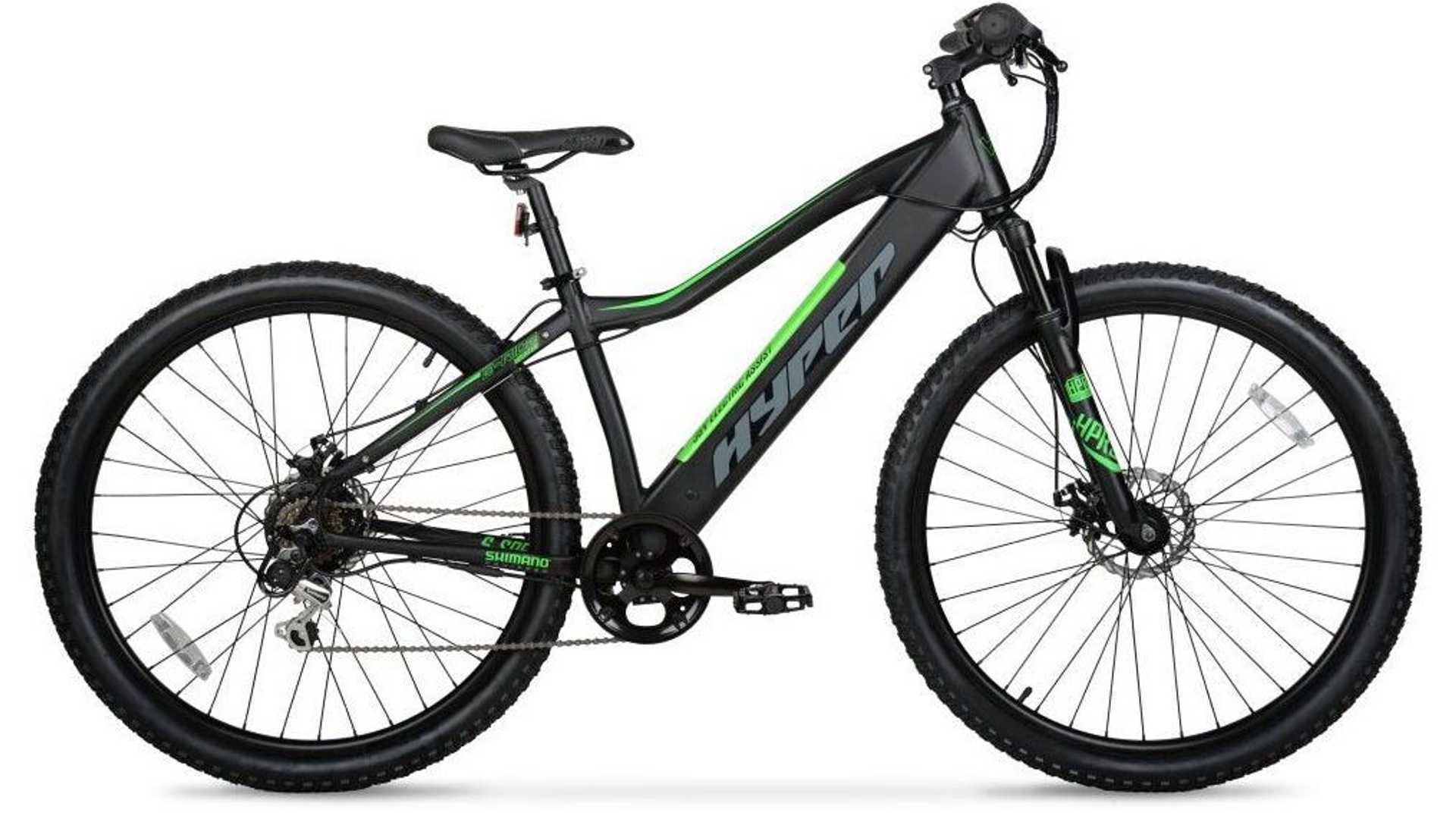
How far can $600 take you when it comes to e-bikes nowadays? Well, surprisingly, pretty darn far. As technology surrounding powertrains and batteries has advanced over the years, the retail price of e-bikes continues to drop. The fact that manufacturers are focusing on tapping the entry-level market helps a big deal, too, and these days, entry-level e-bikes costing no more than $1,000 are a dime a dozen.
That said, don’t expect to find top-notch features when it comes to these bargain bin specials. However, there’s no denying that tons of fun can be had with these cheap bikes, plus, the much-needed mobility they provide is definitely something that can’t be ignored. Since we’re on the topic of budget-focused e-bikes, Hyper, a brand we’ve covered a few times here, has been on a roll lately. Its newest offering is the E-Ride FS, a basic, no-frills electric mountain bike that retails for no more than $600 USD. The E-Ride FS makes use of a hardtail aluminum frame, basic components, and a 250W electric motor, to bring e-mobility to the masses.
Judging from the frame design alone, it’s clear that Hyper wanted to make this bike as accessible as possible. It gets a down-swooping top tube with a prominent bend near the seat tube making for a unisex frame design. Furthermore, a hub-motor was chosen for this application to keep things simple, cheap, and easy to maintain. As is the case with most e-bikes of this variety, the battery is housed in the down tube to lower the center of gravity and give the bike a sleek appearance.
Yes, the Hyper E-Ride FS is indeed an electric mountain bike. That said, as I have come to learn with all the bikes I’ve owned, “mountain” is subjective, and in the case of the E-Ride, it’s likely that light trails and gravel roads are all this budget-focused e-MTB could be capable of—that is, at least without risking some damage to its running gear. That said, for $600, there’s a lot of fun to be had on this thing.

As mentioned, a 250W hub motor, no mention of brand here, propels this two-wheeler to a top speed of 20 miles per hour with assist on. The bike’s battery is good for 20 miles of assisted range, which, in reality, isn’t all that great—but for $600, who am I to complain? Other hardware consists of an unbranded front suspension fork that looks to have somewhere between 80 to 100 mm of suspension travel. Also, a bottom-dollar groupset from Shimano, sporting only six speeds at the back, offers some assurance that the bike’s running gear indeed can indeed stand the test of time.








